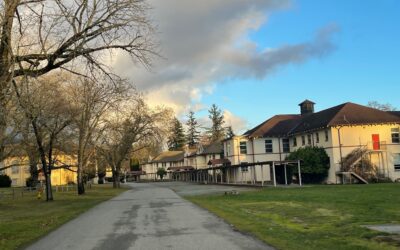The Case of the Missing Denominator
As a long-time promoter of hiking safety education, the title of a recent web article caught my attention: “These Are the 5 Deadliest National Parks.”
As a long-time SAR volunteer, I was happy to see that the article advised on specific hazards that might be encountered in each of these national parks. It’s important for people to know for example, that in Yosemite National Park, in addition to falls from cliffs, a number of fatalities have occurred in the park’s enticing, but swift-flowing streams.
But as a long-time data scientist, I was appalled to see yet another example of lazy journalism, foisting invalid comparisons on the public consciousness.
The “I-didn’t-pay-much-attention-in-high-school” error made in this article was that national parks were rated simply on the number of reported deaths since 2010, with this resultant ranking:
- Grand Canyon: 134
- Yosemite: 126
- Great Smokey Mountains: 92
- Sequoia / Kings Canyon: 75
- Yellowstone: 52
Wow! Grand Canyon has twice as many deaths as Sequoia / Kings Canyon. I know which park I’m going to avoid on my next trip!
Or . . . maybe I don’t know.
The logical weakness here is pretty easy to understand. Let’s look at the following example:
Let’s say we want to compare the danger at Lake Placid National Park with that of Death Cliffs National Park. In absolute numbers (you remember, the ones we learned in high school not to use), we find the number of deaths to be:
Lake Placid National Park: 100
Death Cliffs National Park: 2
Clearly, Lake Placid National Park is a much more dangerous place to visit. Presumably because of the alligators . . .
But hang on a second, is it possible we haven’t considered the big picture? What if Lake Placid had a million visitors a year and Death Cliffs only a hundred visitors a year? This would mean that at Lake Placid the death rate was only 1 per 10,000 visitors, while at Death Cliffs the death rate was 200 per every 10,000 visitors.
Hmmmm . . . this changes the picture, doesn’t it? I don’t know about you, but I’m thinking Death Cliffs National Park may not be the best vacation spot for the family and the kids.
To be fair, the author of “The Most Dangerous National Parks” did mention that some parks had more visitors than others. But then she proceeded to ignore that important factor entirely.
Denominators, (and understanding the need for them), are important.
It would take a journalist about 60 seconds of Google Time to find national park visitation rates on the internet. These are included in the sample table below, and allow us to calculate a rate of deaths per visit for the same five national parks listed above. (These data are approximate, and used for illustration purposes only).

OK, then. Which is really the most dangerous national park?
When we consider a rate that makes sense (Deaths per Visit), clearly Sequoia Kings Canyon National Park has the highest rate, followed by Yosemite and Grand Canyon. In fact, we can see that the rate of deaths per visit for Sequoia / Kings Canyon while low, is almost two times higher than the rate of deaths per visit for the Grand Canyon.
So, are the five national parks listed in the media post really the five deadliest? Without doing a proper analysis, we have no way of knowing. We simply have a few numbers that are easy to whip into an attention-getting article.
Comparing absolute numbers is a common but unfortunate propensity in journalism. The press almost always gets it wrong. The public almost never gets it right. What I hope has also become clear, is that comparing the absolute number of deaths in national parks is facile at best, and misleading at worst.
So, the Case of the Missing Denominator is solved right? Well, not so fast.
Is Total Number of Visits the only correct denominator for this comparison? What about Total Acreage of each national park? What about Miles of Trails of each national park? Both of these quantities (also easily found on the internet) may be valid denominators for comparing death rates in national parks.
It should be apparent by now that this cautionary tale about comparing absolute numbers applies widely across many topic areas.
Breaking News from Lazybones Press: “Bicycle thefts in Smallville have doubled in the last 10 years!”
By now, you know to ask, “Well how has the population of Smallville changed over the last 10 years?”
“Well, let’s see . . . looks like it’s twice what it was 10 years ago.”
___________________________________________________
Sign up for our email list and get a FREE Hikers Safety Guide including our tool to figure out your own hiking safety score.





0 Comments